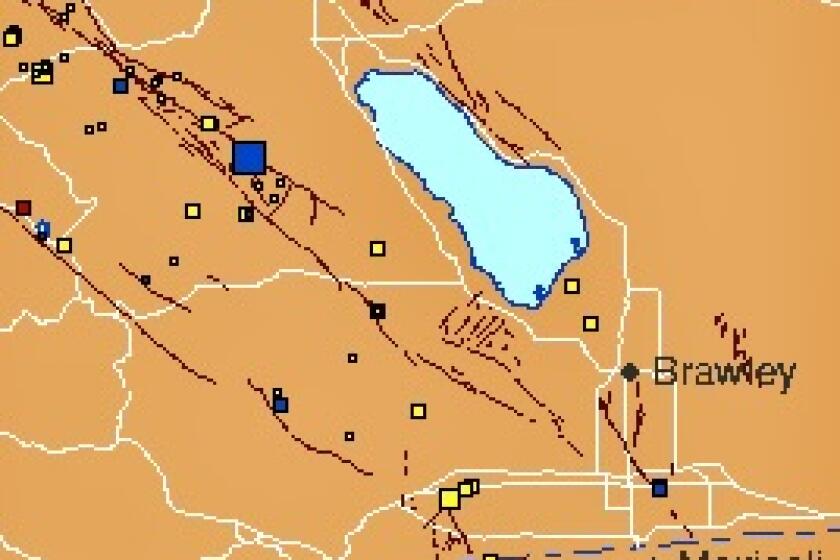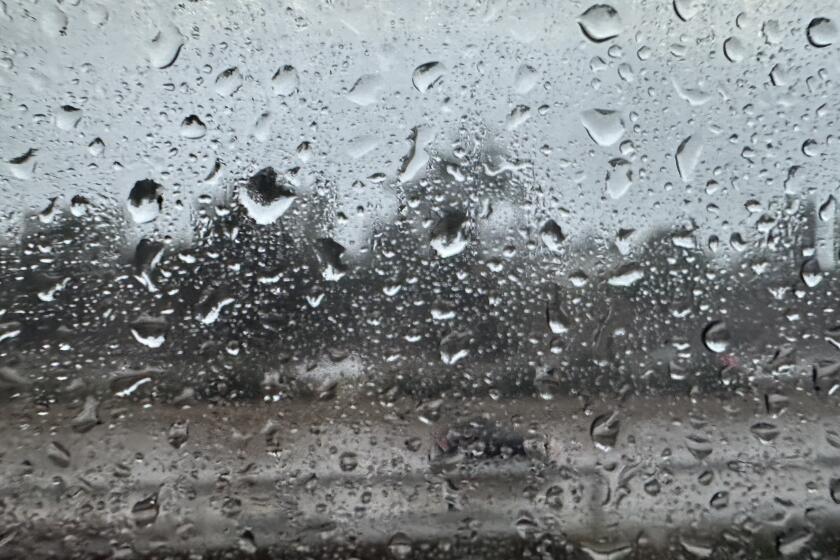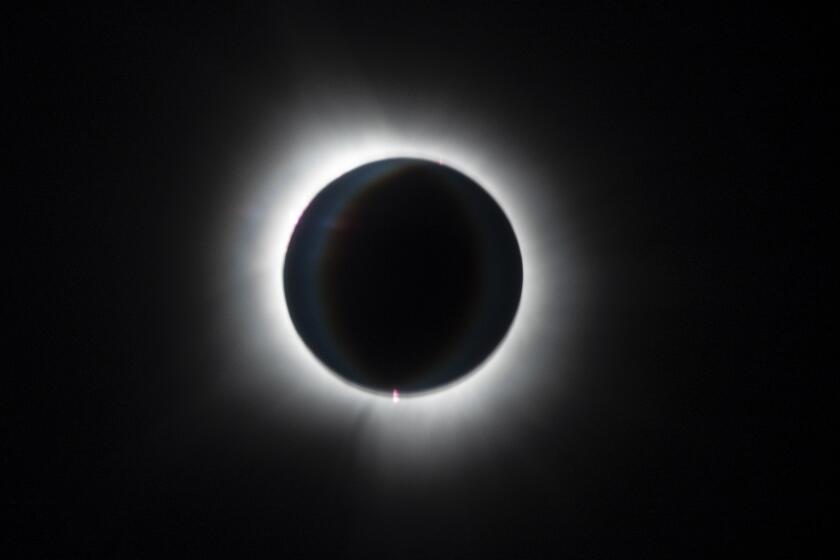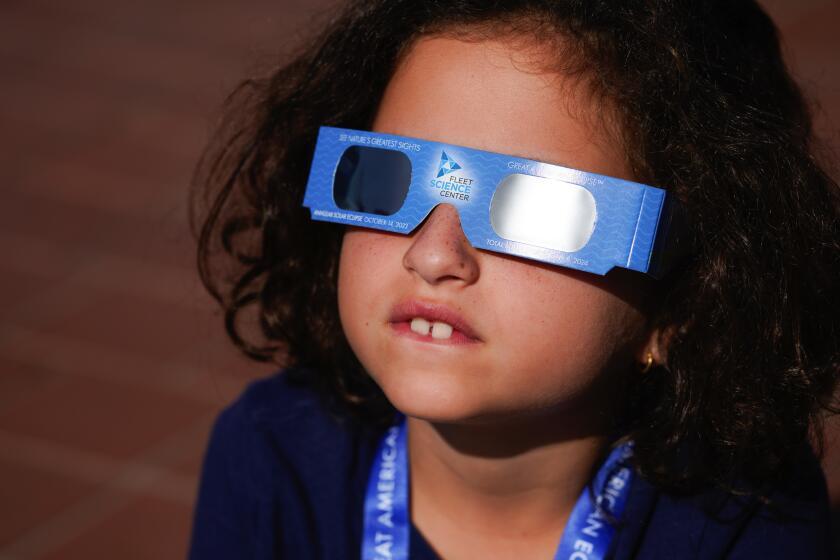Exquisite eclipse excites night owls
It was the perfect remark about a perfectly beautiful moment on a perfect night.
As the moon slipped into full eclipse early Tuesday, turning a coppery-red, San Diego City College astrophysicist Lisa Will took to Twitter and said, “Oh, this is just lovely.”
Like millions of other night owls, Will was savoring the site of the first of four eclipses that will be visible from all or parts of North America over the next two years, celestial wonders that will come approximately once every six months.
The moon began to slip into Earth’s shadow at 9:55 p.m. on Monday and reached totality at 12:08 a.m. Tuesday, turning from silver to copper to a darkish copper-red. Just above the moon, off to the right, at the one o’clock position, Mars silently and subtly glowed red, reflecting light from the distant sun.
Will noticed the marine layer beginning to inch its way on shore as she watched from Pacific Beach. From many coastal spots, the clouds made the moon look as though it was swathed in gauze. But the eclipse was still easy to see, standing out in a sky that was otherwise scrubbed of clouds by the offshore winds that puffed across the county on Monday.
As Will said, it was lovely.
Get Essential San Diego, weekday mornings
Get top headlines from the Union-Tribune in your inbox weekday mornings, including top news, local, sports, business, entertainment and opinion.
You may occasionally receive promotional content from the San Diego Union-Tribune.












